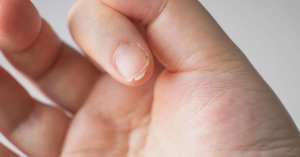Urinary tract infections (UTIs) are a common concern for young girls, including those as young as toddlers. Although UTIs are often associated with adults, young children are also at risk due to factors such as anatomy, hygiene habits, and health conditions. For parents, understanding how UTIs affect young girls and knowing the signs can help prevent complications and provide comfort. In this guide, we’ll explore what causes UTIs in young girls, symptoms to watch for, and practical steps parents can take to prevent and manage these infections.
What Is a Urinary Tract Infection (UTI)?
A urinary tract infection (UTI) occurs when bacteria enter the urinary system, which includes the kidneys, bladder, ureters, and urethra. UTIs can affect any part of this system, but infections in the bladder (cystitis) are most common, especially in young girls. The proximity of the urethra (the tube that carries urine out of the body) to the anus makes it easier for bacteria to enter the urinary tract, leading to infection.
Why Are Young Girls More Susceptible to UTIs?
Young girls are more susceptible to UTIs for several reasons:
1. Anatomy: In young girls, the urethra is shorter and closer to the anus, making it easier for bacteria to travel from the skin into the urinary tract.
2. Hygiene Habits: Children are still learning good hygiene habits, so they may not always wipe properly after using the bathroom or wash their hands as frequently. Wiping back to front, for example, can transfer bacteria from the anus to the urethra.
3. Holding Urine: Sometimes children may delay going to the bathroom, leading to bladder irritation and a greater risk of infection. Holding urine for too long can also allow bacteria to multiply in the bladder.
4. Constipation: Chronic constipation can put pressure on the bladder, making it harder to empty completely and leading to a buildup of bacteria.
Signs and Symptoms of UTIs in Young Girls
Recognizing a UTI in young children can be challenging since they may not always be able to express discomfort clearly. Here are common signs to watch for:
• Pain or Burning with Urination: If your child expresses pain, discomfort, or complains of a “burning” feeling when urinating, it could indicate a UTI.
• Frequent Urination: A sudden increase in the frequency of urination, especially if only small amounts are passed each time, can be a sign of infection.
• Urgency: If your child needs to use the bathroom urgently or has accidents despite being potty-trained, this could be related to a UTI.
• Cloudy or Foul-Smelling Urine: A strong odor or cloudy appearance in urine is a common indicator of infection.
• Abdominal or Back Pain: Pain in the lower abdomen, lower back, or sides can sometimes accompany a UTI.
• Fever: In some cases, a UTI can cause fever. For young children, a fever without a clear cause should always be checked by a healthcare provider.
Causes of UTIs in Young Girls
UTIs in young girls are usually caused by bacteria from the skin or bowel entering the urethra. The following factors increase the likelihood of bacteria reaching the urinary tract:
• Improper Wiping Techniques: Wiping from back to front after using the bathroom can introduce bacteria to the urethral area.
• Infrequent Urination: Holding urine for long periods creates an environment where bacteria can grow.
• Bubble Baths or Harsh Soaps: Certain soaps, bubble baths, or scented products can irritate the urethra and lead to infections.
• Dehydration: When children don’t drink enough water, they urinate less often, which allows bacteria to stay in the bladder longer.
Treatment for UTIs in Young Girls
If you suspect your child has a UTI, contact a healthcare provider. UTIs are typically treated with antibiotics to clear the infection, which should be taken exactly as prescribed to prevent recurrence. In some cases, additional tests may be recommended if the UTI is recurrent.
During treatment, ensure your child drinks plenty of water to help flush out bacteria. Over-the-counter pain relievers may be suggested by a doctor to alleviate discomfort, but never give medication without consulting a healthcare provider first.
Preventing UTIs in Young Girls
While UTIs can’t always be avoided, these preventive measures can significantly reduce the risk:
1. Teach Proper Wiping Technique: Encourage your child to wipe from front to back to prevent bacteria from entering the urethra. If needed, demonstrate this technique gently and positively.
2. Encourage Regular Bathroom Breaks: Remind your child to go to the bathroom when they feel the urge and avoid “holding it” for long periods.
3. Promote Good Hydration: Drinking plenty of water helps flush bacteria from the urinary tract. Keep a water bottle handy and encourage frequent sips throughout the day.
4. Choose Unscented, Mild Soap: Avoid bubble baths or scented soaps, as they can irritate sensitive areas. Opt for gentle, fragrance-free products.
5. Promote Loose, Cotton Underwear: Tight clothing and non-breathable fabrics can create a warm, moist environment where bacteria thrive. Encourage cotton underwear and loose-fitting clothes for comfort and hygiene.
Conclusion
Urinary tract infections in young girls can be uncomfortable, but with early detection and proper care, they can be treated effectively. Teaching children about hygiene, hydration, and good bathroom habits can significantly reduce their risk of developing UTIs. By supporting these habits, parents can help their daughters stay healthy, comfortable, and confident. If you notice symptoms of a UTI in your child, consult a healthcare provider promptly for guidance and treatment.








